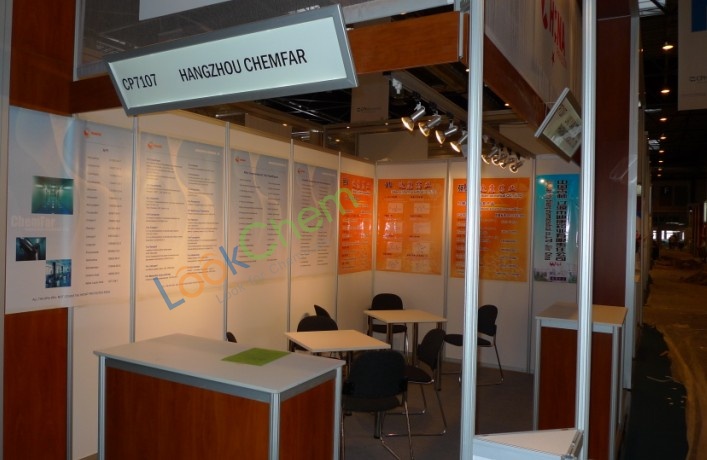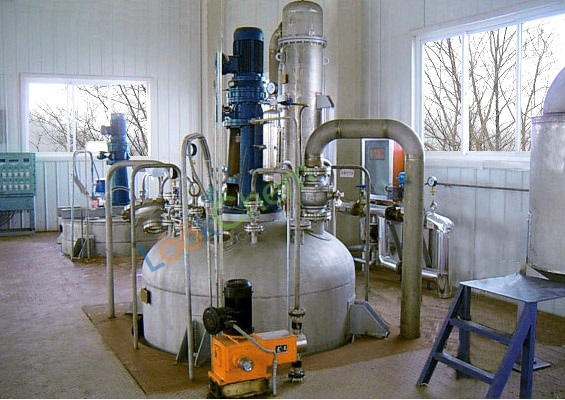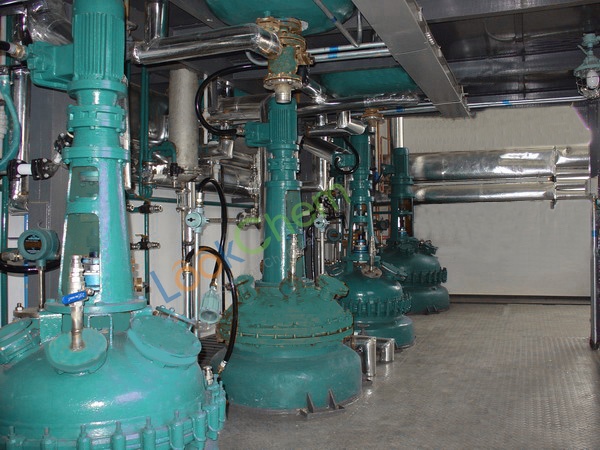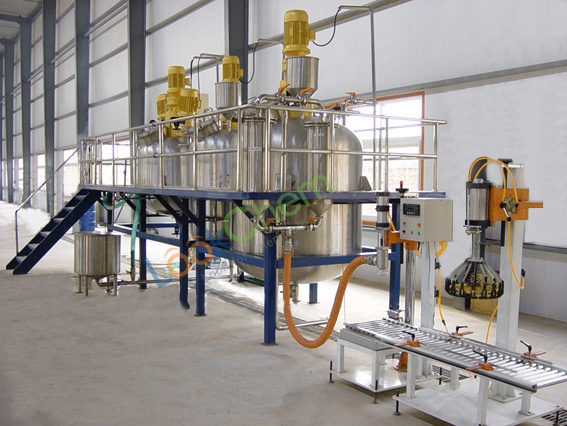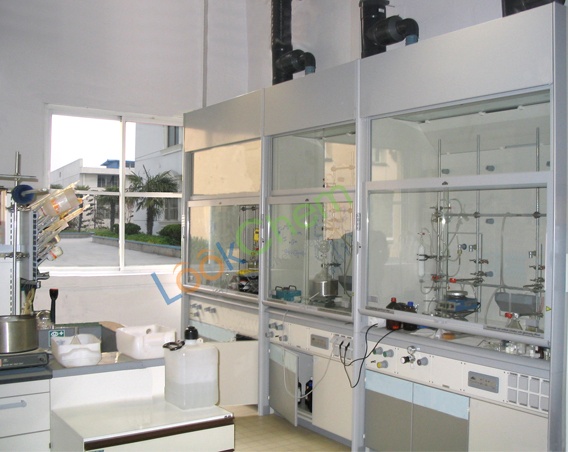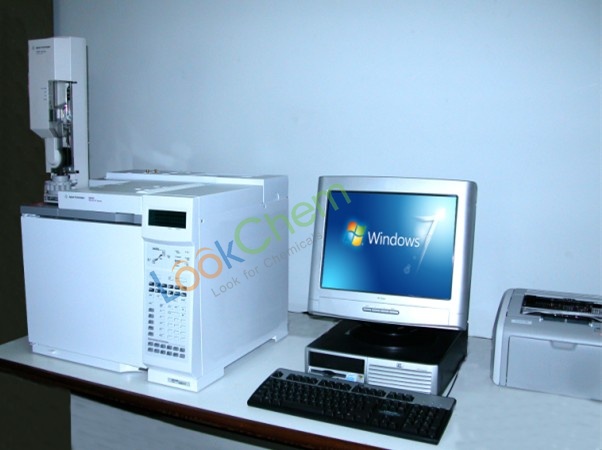citric acid msds
- Product Details
- Company Profile
Citric acid (CAS No. 77-92-9) msds detailed information are provided by Hangzhou Chemfar Ltd., which has more than 20 years' experience focused on providing integrated development and manufacturing service to the pharmaceutical and fine chemical industry.
Section 1: Chemical Product and Company Identification
Product Name: Citric acid
CAS#: 77-92-9
RTECS: GE7350000
Synonym: 2-Hydroxy-1,2,3-propanetricarboxylic acid
Chemical Formula: C6H8O7
Section 2: Composition and Information on Ingredients
Composition: Citric acid
CAS #: 77-92-9
Toxicological Data on Ingredients: Citric acid: ORAL (LD50): Acute: 5040 mg/kg [Mouse]. 3000 mg/kg [Rat].
Section 3: Hazards Identification
Potential Acute Health Effects:
Hazardous in case of eye contact (irritant), of inhalation (lung irritant). Slightly hazardous in case of skin contact (irritant, sensitizer), of ingestion. The amount of tissue damage depends on length of contact. Eye contact can result in corneal damage or blindness. Skin contact can produce inflammation and blistering. Severe over-exposure can produce lung damage, choking, unconsciousness or death.
Potential Chronic Health Effects:
Slightly hazardous in case of skin contact (sensitizer). CARCINOGENIC EFFECTS: Not available. MUTAGENIC EFFECTS:
Not available. TERATOGENIC EFFECTS: Not available. DEVELOPMENTAL TOXICITY: Not available. The substance may be toxic to teeth. Repeated or prolonged exposure to the substance can produce target organs damage. Repeated exposure of the eyes to a low level of dust can produce eye irritation. Repeated skin exposure can produce local skin destruction, or dermatitis. Repeated inhalation of dust can produce varying degree of respiratory irritation or lung damage.
Section 4: First Aid Measures
Eye Contact:
Check for and remove any contact lenses. In case of contact, immediately flush eyes with plenty of water for at least 15 minutes. Cold water may be used. Get medical attention.
Skin Contact:
In case of contact, immediately flush skin with plenty of water. Cover the irritated skin with an emollient. Remove contaminated clothing and shoes. Cold water may be used.Wash clothing before reuse. Thoroughly clean shoes before reuse. Get medical attention.
Serious Skin Contact:
Wash with a disinfectant soap and cover the contaminated skin with an anti-bacterial cream. Seek medical attention.
Inhalation:
If inhaled, remove to fresh air. If not breathing, give artificial respiration. If breathing is difficult, give oxygen. Get medical attention.
Serious Inhalation: Not available.
Ingestion:
Do NOT induce vomiting unless directed to do so by medical personnel. Never give anything by mouth to an unconscious person. Loosen tight clothing such as a collar, tie, belt or waistband. Get medical attention if symptoms appear.
Serious Ingestion: Not available.
Section 5: Fire and Explosion Data
Flammability of the Product: May be combustible at high temperature.
Auto-Ignition Temperature: 1010°C (1850°F)
Flash Points: Not available.
Flammable Limits: LOWER: 0.28 Kg/M3 (Dust) UPPER: 2.29 Kg/M3 (Dust)
Products of Combustion: These products are carbon oxides (CO, CO2).
Fire Hazards in Presence of Various Substances:
Slightly flammable to flammable in presence of heat. Non-flammable in presence of shocks.
Explosion Hazards in Presence of Various Substances:
Slightly explosive in presence of open flames and sparks. Non-explosive in presence of shocks.
Fire Fighting Media and Instructions:
SMALL FIRE: Use DRY chemical powder. LARGE FIRE: Use water spray, fog or foam. Do not use water jet.
Special Remarks on Fire Hazards: As with most organic solids, fire is possible at elevated temperatures
Special Remarks on Explosion Hazards:
Fine dust dispersed in air in sufficient concentrations, and in the presences of an ignition source is a potential dust explosion
hazard.
Section 6: Accidental Release Measures
Small Spill:
Use appropriate tools to put the spilled solid in a convenient waste disposal container. Finish cleaning by spreading water on the contaminated surface and dispose of according to local and regional authority requirements.
Large Spill:
Stop leak if without risk. Do not get water inside container. Do not touch spilled material. Use water spray to reduce vapors.
Prevent entry into sewers, basements or confined areas; dike if needed. Eliminate all ignition sources. Call for assistance on disposal. Finish cleaning by spreading water on the contaminated surface and allow to evacuate through the sanitary system.
Section 7: Handling and Storage
Precautions:
Keep away from heat. Keep away from sources of ignition. Ground all equipment containing material. Do not ingest. Do not breathe dust. Avoid contact with eyes. Wear suitable protective clothing. In case of insufficient ventilation, wear suitable respiratory equipment. If ingested, seek medical advice immediately and show the container or the label. Keep away from incompatibles such as oxidizing agents, reducing agents, metals, alkalis.
Storage: Keep container tightly closed. Keep container in a cool, well-ventilated area.
Section 8: Exposure Controls/Personal Protection
Engineering Controls:
Use process enclosures, local exhaust ventilation, or other engineering controls to keep airborne levels below recommended exposure limits. If user operations generate dust, fume or mist, use ventilation to keep exposure to airborne contaminants below the exposure limit.
Personal Protection:
Safety glasses. Lab coat. Gloves (impervious). Dust respirator. Be sure to use an approved/certified respirator or equivalent.
The dust respirator should be used for conditions where exposure has exceeded recommended exposure limits, dust is apparent, and engineering controls(adequate ventilation) are not feasible.
Personal Protection in Case of a Large Spill:
Splash goggles. Full suit. Dust respirator. Boots. Gloves. A self contained breathing apparatus should be used to avoid inhalation of the product. Suggested protective clothing might not be sufficient; consult a specialist BEFORE handling this product.
Exposure Limits:
No exposure guidelines have been established. ACGIH, NIOSH and OSHA have not developed exposure limits for this product. The exposure limits given below are for particulates not otherwise classified: ACGIH: 10 mg/m3 TWA (Total Inhalable fraction); 3 mg/m3 TWA (Respirable fraction) OSHA: 15 mg/m3 TWA (Total dust); 5 mg/m3 TWA (Respirable Fraction)
Section 9: Physical and Chemical Properties
Physical state and appearance: Solid. (Crystalline powde)
Odor: Odorless.
Taste: Acid. (Strong.)
Molecular Weight: 192.13 g/mole
Color: Not available.
pH (1% soln/water): Not available.
Boiling Point: Decomposes.
Melting Point: 153°C (307.4°F)
Critical Temperature: Not available.
Specific Gravity: 1.665 (Water = 1)
Vapor Pressure: Not applicable.
Vapor Density: Not available.
Volatility: Not available.
Odor Threshold: Not available.
Water/Oil Dist. Coeff.: The product is more soluble in water; log(oil/water) = -1.7
Ionicity (in Water): Not available.
Dispersion Properties: See solubility in water, diethyl ether.
Solubility:
Soluble in cold water, hot water, diethyl ether. Insoluble in benzene.
Section 10: Stability and Reactivity Data
Stability: The product is stable.
Instability Temperature: Not available.
Conditions of Instability: Excess heat, incompatible materials
Incompatibility with various substances: Reactive with oxidizing agents, reducing agents, metals, alkalis.
Corrosivity:
Corrosive in presence of aluminum, of zinc, of copper. Non-corrosive in presence of glass.
Special Remarks on Reactivity:
Incompatible with oxidizing agents, potassium tartrate, alkali, alkaline earth carbonates and bicarbonates, acetates, and
sulfides, metal nitrates
Special Remarks on Corrosivity: Will corrode copper, zinc, aluminum and their alloys.
Polymerization: Will not occur.
Section 11: Toxicological Information
Routes of Entry: Inhalation. Ingestion.
Toxicity to Animals: Acute oral toxicity (LD50): 3000 mg/kg [Rat].
Chronic Effects on Humans: May cause damage to the following organs: teeth.
Other Toxic Effects on Humans:
Hazardous in case of inhalation (lung irritant). Slightly hazardous in case of skin contact (irritant, sensitizer), of ingestion.
Special Remarks on Toxicity to Animals: LDL[Rabbit] - Route: oral; Dose: 7000mg/kg
Special Remarks on Chronic Effects on Humans: Not available.
Special Remarks on other Toxic Effects on Humans:
Acute Potential Health Effects: Skin: Causes mild to moderate skin irritation. May cause skin sensitization, an allergic reaction,
which becomes evident upon re-exposure to this material. Eyes: Causes moderate to severe eye irritation and possible
injury. Ingestion: May cause gastrointestinal (digestive) tract irritation with nausea, vomiting, diarrhea. Excessive intake may
cause erosion of teeth and hypocalcemia (calcium deficiency in blood). May affect behavior/central nervous system (tremor,
convulsions, muscle contraction or spasticity). Inhalation: Causes moderate respiratory tract and mucous membrane irritation.
Chronic Potential Health Effects: Frequent intake of citrated beverages may cause erosion of dental enamel and irritation of
mucous membranes.
Section 12: Ecological Information
Ecotoxicity: Not available.
BOD5 and COD: Not available.
Products of Biodegradation:
Possibly hazardous short term degradation products are not likely. However, long term degradation products may arise.
Toxicity of the Products of Biodegradation: The product itself and its products of degradation are not toxic.
Special Remarks on the Products of Biodegradation: Not available.
Section 13: Disposal Considerations
Waste Disposal:
Waste must be disposed of in accordance with federal, state and local environmental control regulations.
Section 14: Transport Information
DOT Classification: Not a DOT controlled material (United States).
Identification: Not applicable.
Special Provisions for Transport: Not applicable.
Section 15: Other Regulatory Information
Federal and State Regulations: TSCA 8(b) inventory: Citric acid
Other Regulations: EINECS: This product is on the European Inventory of Existing Commercial Chemical Substances.
Other Classifications:
WHMIS (Canada): CLASS E: Corrosive solid.
DSCL (EEC):
R36/37/38- Irritating to eyes, respiratory system and skin. S26- In case of contact with eyes, rinse immediately with plenty of
water and seek medical advice. S37/39- Wear suitable gloves and eye/face protection.
HMIS (U.S.A.):
Health Hazard: 2
Fire Hazard: 1
Reactivity: 0
Personal Protection: e
National Fire Protection Association (U.S.A.):
Health: 2
Flammability: 1
Reactivity: 0
Specific hazard:
Protective Equipment:
Gloves (impervious). Lab coat. Dust respirator. Be sure to use an approved/certified respirator or equivalent. Wear appropriate
respirator when ventilation is inadequate. Safety glasses.
Verified Supplier
Hangzhou Chemfar Ltd.
- Country:
 China (Mainland)
China (Mainland) - Year Established: 2002
- Business type: Other
- Integral:


Contact Details|Similar Products

Escrow ServiceMore
Secure Your Orders With escrow More Transparency,Less Uncertainty


 Add to inquiry cart
Add to inquiry cart


